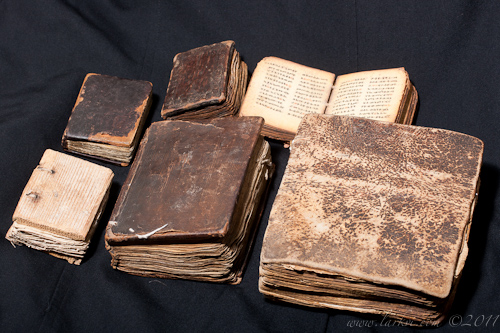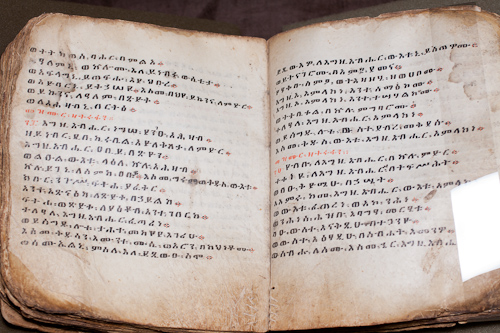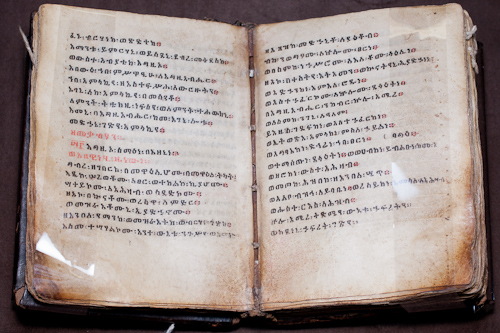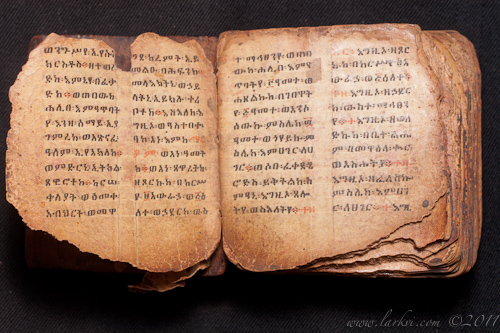
Codices

Dawit (Psalms) in leather boards
Ge'ez. 150 x 180 mm. 19th or 20th century(?)
The Psalter is the basis of the Ethiopian religious educational system. This copy, bound in leather boards with no wooden reinforcement, shows damage from a variety of sources, including humidity and use. The fraying stitching has been knotted together, showing a type of day-to-day mending of what would have been a functional book.
The Ethiopic Psalter contains:
- 151 Psalms of David
- 15 Biblical Canticles
- The Praises of Mary
- The Gate of Light
The ordering of the Psalms is after the Septuagint, with a 151st Psalm (I was small among my brothers...) that is apocryphal in the Western tradition. The left page rubric marks the beginning of Psalm 98 (The Lord became king; let peoples grow angry!); the right-page rubric marks Psalm 99 (Make a joyful noise to the Lord, all the peoples of the earth.) .

Dawit (Psalms) with tooled covers.
Ge'ez. 100 x 135 mm. 20th century(?)
This Psalter, in better repair, has threads sewn into the edges of the pages, to mark the divisions of the text. The boards are of red/brown ‘Morocco’ leather, tooled with traditional designs. It is open to the rubric at the beginning of Psalm 43 (O God, we heard with our ears...) The bits of string sewn onto the edges of the pages mark major chapter divisions (every ten Psalms and each book thereafter) for easy reference.

Book of prayers in wooden boards.
Ge'ez. 70 x 76 mm. 19th or 20th century(?).
A small book of prayers of the type used in individual devotions. Written in a small, fine hand. Bound in split wooden boards which have been repaired, it shows wear from use, dirt, climate, and perhaps the nibbling of rodents.

Bandlet of Righteousness
Ge'ez. 60 x 80 mm. 20th century(?)
The lefafa tsedq or Bandlet of Righteousness is an amuletic text, meant to be kept on the body in order to ward off a variety of ills. Said to have been written by Christ "with golden ink" for his mother Mary, and given by her to her devotees as a protection, it relies upon the invocation of asmat, names of power, which channel supernatural power on behalf of the invoker, in this case the bearer of the book.
The name ኢየሱ Iyäsu "Jesus" is written in red ink, in accordance with the tradition that the names of Mary, God, and saints important to the book are ornamented in this way. As is traditional, the grain in the wood runs top to bottom.

